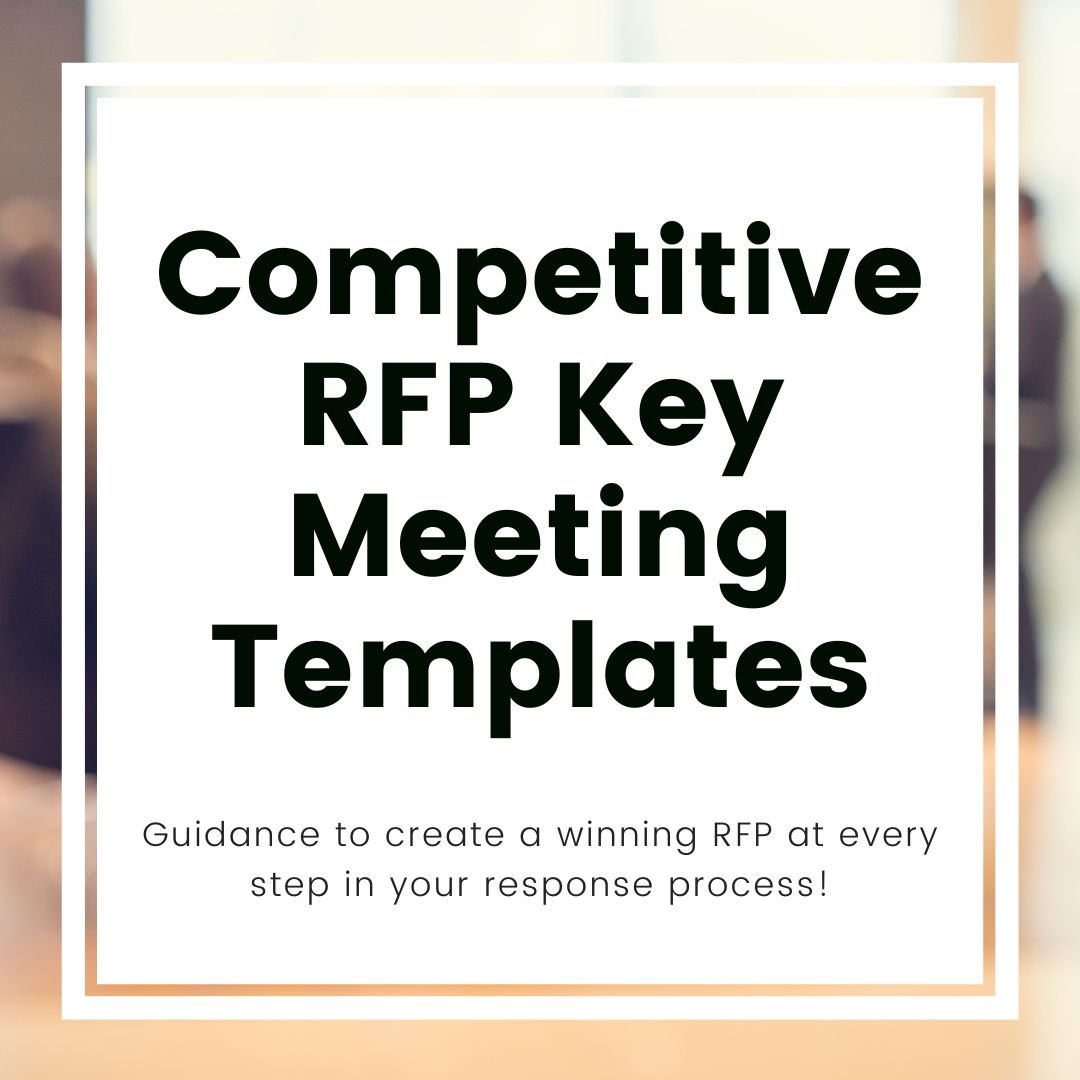The Simplified Shipley Process
One of the most recognized proposal processes is the Shipley Proposal Process. The Association of Proposal Management Professionals (APMP) recognizes Shipley as a top process and offers a certification on it.
While it is an excellent process used by many major organizations, for some smaller teams, Shipley can be overkill. If your team consists of only a handful of people (or maybe even just you) and you respond to fairly simple RFPs, then the full process may cause more pain than benefit.
That’s why we follow a simplified version to reap the benefits without having to fill out a robust team with more meetings than are needed.
Winning RFPs in 2025
A lot has changed for RFPs and contracting in 2025. Large federal contracts are facing scrutiny as budgets are cut, and other public sector agencies are feeling the ripple as they receive less federal funding.
It can be scary if that’s your main source of revenue, but this doesn’t have to be a loss. Organizations will continue to operate. State, local, education, healthcare, and commercial RFPs are still being released, but they create tight competition as companies search for a stable and predictable income stream for the next few years.
Your business should be one of those signing a new contract. This simplified process will help you put your competitive insights into practice, but if you haven’t found the right sales strategy to beat your top competitors, now is the time to put that into place. We can help.
If you’d like to follow a simplified process grounded in strategy, below are the key meetings to hold.
1. The Strategy Meeting
The Shipley process would like for you to do plenty of prep work, ideally years in advance, to create a strategy before the RFP is ever released.
But many small and mid-sized companies aren’t operating on those long timeframes with their RFPs.
Fortunately, you can hold a strategy meeting once the RFP is released to create a winning approach without having to spend years prepping.
The Strategy Meeting is held typically right after you start working on the proposals, and it can sometimes be combined with the kickoff meeting if you have a very short turnaround.
The focus of this meeting is to create your win themes and competitive strategy. You’ll talk through competitors who are bidding (or who you suspect will bid), the customer’s goals and pain points, and how to position your company to win. You might even share specific pieces of content to incorporate into the proposal.
2. The Brainstorming Session
If you’re familiar with Shipley, the Brainstorming Session is a simplified version of a Pink Team. The goal of this meeting is to work through key points, especially the evaluation criteria, and determine what makes your company unique and appealing to the customer. Throughout the meeting, you’ll jot down ideas for specific pieces of information to include to support these points. For example, maybe you want to emphasize your work with the company next door to the customer. In this case, you might include photos from the project and ask that client to be a reference or even include a mini case study.
Depending on the turnaround time for your RFP, there might not be enough time to hold a separate Brainstorming Session. If this is the case, use the Strategy Meeting and/or kickoff call to work through these pieces.
3. The Review Meeting
Whereas the Strategy Meeting and Brainstorming Session occur at the beginning of the proposal, the Review Meeting takes place in the final quarter of the process. This is similar to a Red Team in the Shipley Process. The goal of this meeting is to read through your proposal and identify any gaps or weak areas.
The best way to hold this meeting is to send out the proposal for review a few days before the meeting with a list of questions to ask the team to answer. If the RFP included evaluation criteria, include these in the list of questions and ask your team to score each one. You should be able to identify common themes of weak areas to be improved.
If you’re a team of one, you can take a break from the proposal for 24 hours so that it’s less familiar to you when you go back to read it.
4. The Compliance Meeting
The Compliance Meeting will take place at the very end of your proposal process, right before you submit it to the customer. The goal of this meeting is to review your proposal for compliance and ensure that you aren’t missing any pieces that will get your proposal tossed without evaluation. For example, some RFPs will require a certain format or have a page length requirement or even specific the color ink required for signatures. In the Compliance Meeting, you will review all of those pieces to confirm your proposal is compliant with the RFP requirements.
Next Steps for Winning RFPs
Following this approach will allow you to incorporate strategy into your process without feeling like you need to follow a complicated and lengthy plan for every RFP.
If you’d like to incorporate these meetings into your process but aren’t sure where to get started, then check out the Bid to Win course, which covers how to create a competitive strategy and key meetings to hold for every RFP.
Or grab the Key Review Meeting Templates bundle for a quick start without the training.




